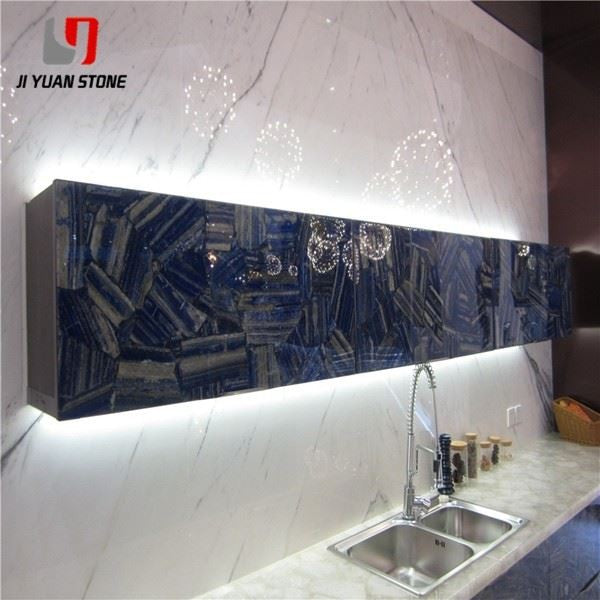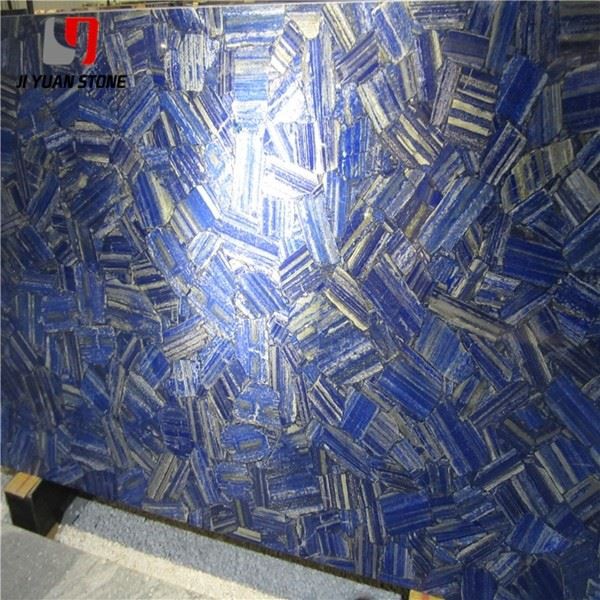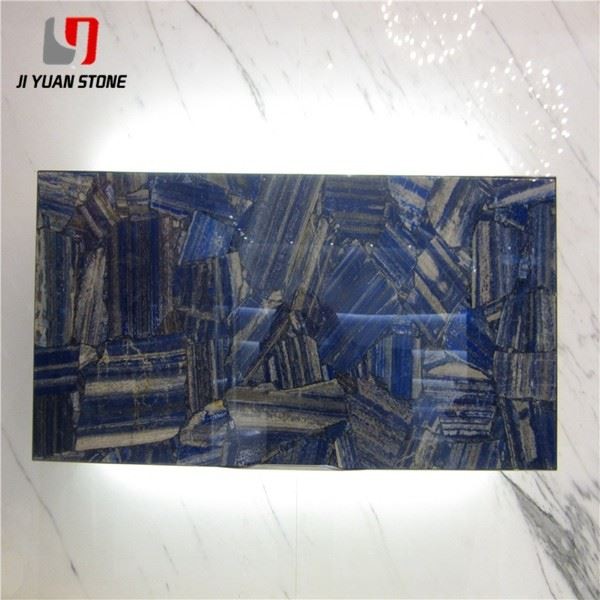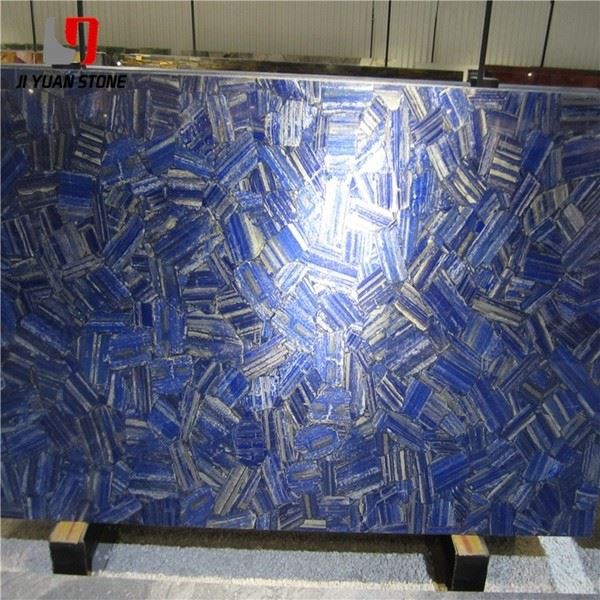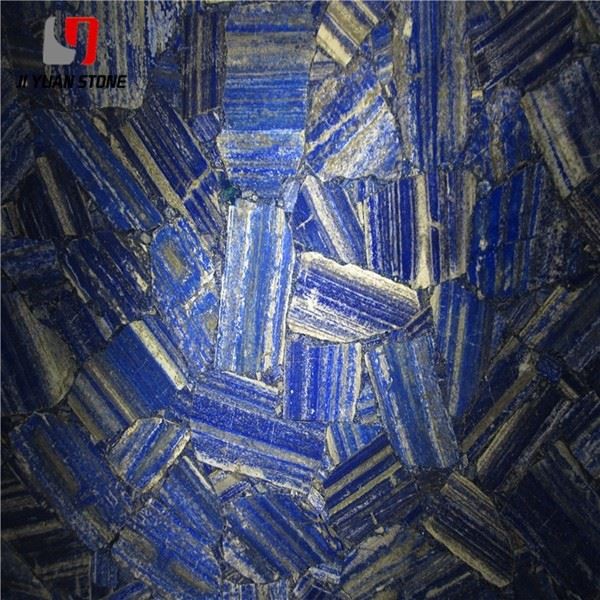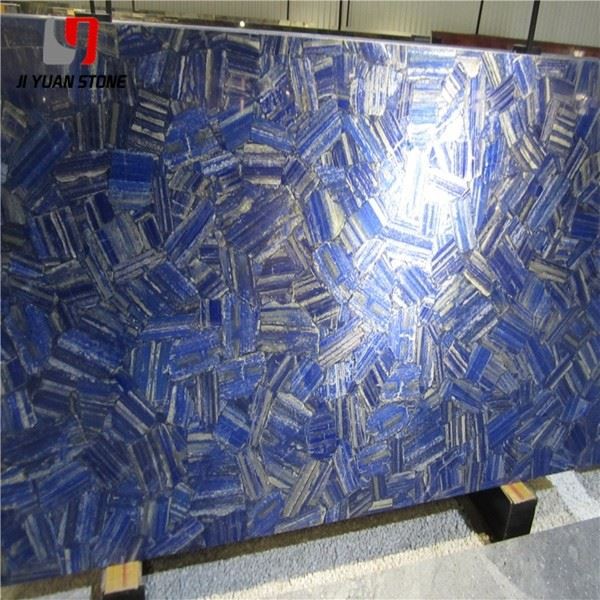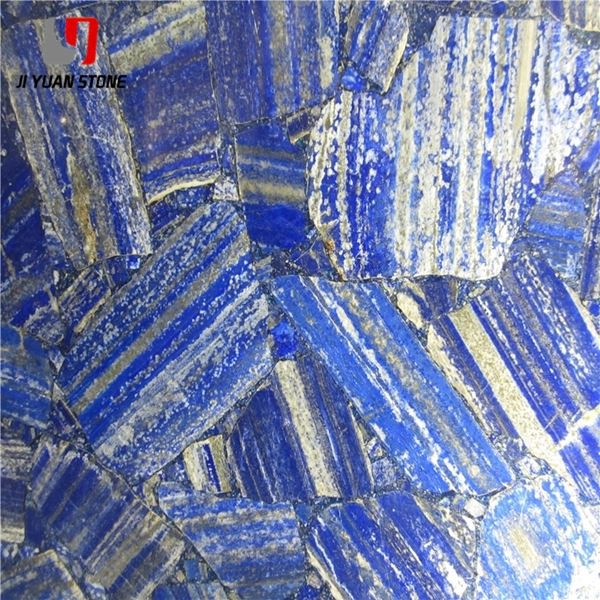Sodalite Granite Slab
Sodalite Granite Slab
Sodalite Granite Slab – Built for Endurance, Designed for Elegance
Introduce a touch of luxury with our Sodalite Granite Slab. The beautiful blue and white tones of this natural stone add a sophisticated look to any space. With its durable and heat-resistant properties, it's not only stylish but also practical for countertops and other surfaces.
| Feature | Details |
|---|---|
| Product Name | Sodalite Granite Slab |
| Material | 100% Sodalite Agate Gemstone |
| Surface Finished | Honed,Polished |
| Finished Products | Floor Tiles, Wall Cladding, Countertops, Windowsills, Special-Shaped Tiles, Small Slabs, Swimming Pool, Steps, Wall Panel, Flooring, Veneers, Slabs, Coping Tiles etc. |
| Color | Yellow,Black,White,Red,Purple Wood,Green,Grey,Pink,Rainbow,Pink,Tiger Eye etc |
| Size | Any sizes customized are welcome |
| Edge Available | Polished, Bush Hammer, Flat, Flamed, Eased, Beveled, Bullnose, Ogee, Cove, Dupont, laminated, non-laminated and etc. |
| Thickness | 10/15/18/20/25/30mm etc |
| Usage | Indoor/Outdoor Decoration, For floor or wall, Counter tops, Vanity tops |
| Packing | Seaworthy Wooden Crate |
Sodalite granite slabs are prized for their striking appearance—rich blues interwoven with bold veining—but their true value lies in their durability. Especially when used in high-traffic or high-pressure environments, the thickness and structural integrity of the slab play a pivotal role in performance.
🔷 Challenges and Considerations for Thin Sodalite Granite Slabs
While thin stone may seem like an economical or aesthetic choice, it comes with several critical drawbacks:
1. Fragility Due to Insufficient Thickness
Natural sodalite granite often contains internal fissures or micro-cracks. When slabs are thinner than 20mm, these cracks compromise the slab’s ability to withstand stress, making them highly prone to breakage during cutting, transport, or installation.
Consequence: Thin sodalite granite slabs are significantly more likely to crack, break, or suffer corner damage, leading to material waste and construction delays.
2. Reverse Osmosis from Adhesives
Thin granite slabs are more vulnerable to reverse osmosis, a phenomenon where adhesives like cement seep through the stone via capillary pores, especially in lighter or translucent stone types.
Consequence: Cement stains emerge on the surface, ruining the appearance of the slab. This effect is especially pronounced during wet installations or when thin slabs are used without a protective backing.
3. Poor Load-Bearing Capacity
In high-load applications, such as flooring in commercial spaces or public squares, thicker slabs are essential. Take inspiration from Beijing’s Tiananmen Square, where 100mm granite was used to withstand heavy foot traffic and vehicles.
Example: The Lugou Bridge still showcases intact granite stones despite centuries of wear from horses and carts, thanks to their substantial thickness and impact resistance.
4. Weak Impact Resistance
There’s an old Chinese saying—“vulnerable to a single blow”—which perfectly describes the issue with thin stone slabs.
- ✅ Thick slabs: Absorb shock and resist chipping and cracking.
- ❌ Thin slabs: Easily damaged by accidental impact or vibration during use.
Consequence: Choosing a thin sodalite granite slab increases the risk of long-term damage, even in controlled environments.
🔷 Why Choose Our Sodalite Granite Slabs?
At Purchase Stones, we prioritize material integrity, strength, and aesthetics. Our sodalite granite slabs:
- ✅ Are crafted with an optimal thickness for high load-bearing applications
- ✅ Minimize risks of reverse osmosis and surface staining
- ✅ Deliver exceptional impact resistance and durability
- ✅ Are professionally inspected to reduce defects and hidden cracks
- ✅ Feature the iconic deep blue sodalite color with premium surface finishes
🔷 Ideal Applications
- Commercial and residential flooring
- Staircases and risers
- Countertops and kitchen islands
- Wall cladding and feature panels
- Monuments and high-traffic exterior surfaces
🔷 Final Thought: Invest in Thickness, Save on Cost and Repairs
While thin sodalite granite slabs may offer short-term savings, their long-term costs—from breakage to surface damage—can far exceed the initial price difference. Thick slabs ensure that the stone you choose today still looks and performs like new for years to come.
Choose thickness. Choose durability. Choose Purchase Stones for high-performance sodalite granite slabs.
Share
